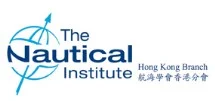forensic investigations
Dr. John Allum, Hannaford Forensic Services (Asia)
Our November event clashed with another major shipping function, but more
than twenty members and guests gathered to hear John Allum speak on the role
of the forensic investigator in marine cases.
John started by explaining the role of the forensic investigator, and the
advice he can provide before carriage of a particular cargo, as well as
after an incident. He then turned to cargo liquefaction of bulk cargoes, and
gave a very clear explanation of the phenomenon and the signs the mariner
should look for. He also warned that the popular 'can test' should never be
the main test for moisture content because it is a 'failure only test'. In
other words, a good can test result is no guarantee the cargo is safe, so
more scientific methods should always be used.
Turning to coal cargoes, John explained the process by which the cargo can
generate heat, and gave advice on preventive methods. He also advised that
any coal cargo with a temperature above 55 degrees Celsius should be
rejected outright, and described some of the tricks which may be encountered
in less reputable ports. Perhaps his most important point was that, in the
majority of cases where cargo fires have been investigated, the onboard gas
monitoring equipment was found to be defective. He sends his equipment to be
checked and calibrated after every operation, but ships often do not
calibrate their equipment for several years, which can be deadly.
Turning to unexpected events, the speaker gave an example of an explosion
caused when zinc anodes and muriatic acid (used to clean holds after
carrying cement) were stored in the same compartment. The acid leaked onto
the zinc in heavy weather, and the chemical reaction generated hydrogen gas,
which needed no encouragement to explode.
John's colleague Nico Zurcher then took to the floor to explain the dangers
of soya beans, of which China is the world's largest importer. Again,
accurate temperature readings are essential, and if the cargo is above 40
degrees it should be carefully investigated before loading. He gave examples
of water damage, damage caused by the heat from the engine room or heated
bunker tanks, and explained how high moisture content due to water ingress
or inadequate drying can promote the growth of mould and generate heat.
Mould damage may be caused by sweat, and he pointed out that, if a claim
arises in China, the courts will always ask for the cargo ventilation
records, so these must be carefully recorded.
Finally, we were delighted to hear from Stephen Magnus-Hannaford himself.
Stephen is a fire expert of international renown, and has investigated fires
worldwide. He made the point that every fire has a single cause, and it is
important to talk to people as well as looking for evidence in the ashes.
Workers often know when something is wrong, but myth and rumour must be
avoided. The sequence of events must be matched to the available evidence.
Stephen then gave us some fascinating examples, including a number where
fraud and greed played a major part in the events he was investigating.
The speakers agreed to take questions, and the discussion continued over
snacks and drinks afterwards. This will be remembered as one of the most
interesting presentations we have organised, and we are indebted to the
three speakers.







